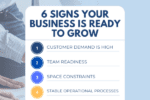Public opinion on artificial intelligence (AI) has shifted in recent years. Today, nearly three-quarters of people are comfortable leveraging an AI chatbot, and more than half say this extends into sensitive areas like medical and financial matters, a recent Qualtrics survey shows. More than half of all businesses leverage AI in some capacity, too, Exploding Topics reports. Customer service leads the pack in terms of use cases, but if your business isn’t leveraging AI in customer service or making the most of it just yet, you’re not alone. On this page, we’ll walk you through the benefits of integrating AI into your customer service processes and areas to focus on for maximum impact.
AI Technologies Explained
AI is a broad field of computer science dedicated to creating systems capable of performing tasks that usually require human intelligence. These tasks include problem-solving, understanding natural language, recognizing patterns, learning from experience, and making decisions.
Categories of AI
AI systems can be categorized into:
- Narrow AI: AI systems designed to perform a narrow task, such as facial recognition or internet searches. They are highly specialized and can perform only the specific tasks they are programmed for.
- General AI: This is a more advanced form of AI, theoretically capable of performing any intellectual task that a human can do. We are not yet at the stage where general AI exists.
- Machine Learning (ML): ML is a subset of AI that focuses on developing algorithms that allow computers to learn from and make predictions or decisions based on data. Instead of being explicitly programmed to perform a task, ML algorithms use statistical techniques to learn patterns in data.
Types of ML
Key types of ML include:
- Supervised Learning: The algorithm is trained on labeled data, meaning the data includes both the input and the desired output. It’s like learning with a teacher.
- Unsupervised Learning: The algorithm is trained on data without labeled responses and tries to find hidden patterns or intrinsic structures in the input data.
- Reinforcement Learning: The algorithm learns by interacting with an environment, receiving rewards for performing tasks correctly and penalties for incorrect actions.
Key Differences Between AI and ML
While AI is the overarching concept of creating machines that can perform intelligent tasks, ML is a specific approach to achieving AI. Let’s examine some of the key differences.
Scope
- AI: Encompasses a wide range of capabilities and techniques for creating intelligent behavior, including but not limited to ML.
- ML: Focuses specifically on algorithms that learn from data.
Techniques
- AI: Includes rule-based systems, expert systems, fuzzy logic, robotics, and natural language processing, in addition to ML.
- ML: Primarily involves methods like regression, classification, clustering, and neural networks.
Applications
- AI: Used in diverse fields such as robotics, game playing, autonomous vehicles, language translation, and more.
- ML: Often employed in applications where large amounts of data are available, such as recommendation systems, fraud detection, image and speech recognition, and predictive analytics.
Capabilities of Generative AI in Customer Support
Generative AI is revolutionizing customer support by providing highly personalized and efficient service. Unlike traditional AI, which relies on predefined rules and datasets, generative AI can create new content and responses tailored to individual customer needs. For instance, generative AI can analyze customer queries and generate customized responses that address customer-specific issues. This capability enhances the overall customer experience by providing precise and relevant information swiftly.
One of the significant benefits of using generative AI in customer support is its ability to anticipate customer needs. By analyzing customer history and behavior, AI tools like these can predict potential issues and provide proactive solutions, reducing the number of customer service interactions required. This predictive capability not only improves customer satisfaction but also enhances the efficiency of customer service operations by reducing the workload on human customer service agents.
Moreover, generative AI can help in handling complex customer queries that typically require human intervention. By understanding the context and nuances of customer questions, generative AI can offer solutions that are as effective as those provided by human agents, ensuring consistent service across all customer interactions. Implementing AI in customer service thus allows businesses to provide exceptional customer service while also optimizing their resources. As customer service in 2024 evolves, generative AI will play a crucial role in delivering personalized service and improving the customer and employee experience.
Benefits of AI in Customer Service
Now that we’ve covered the background, let’s examine two key benefits associated with AI: enhanced customer satisfaction and improved operational efficiency.
Enhanced Customer Satisfaction
- 24/7 Availability: AI-powered chatbots and virtual assistants can provide round-the-clock support, ensuring that customers receive assistance anytime without needing a human agent. This leads to quicker response times and enhances overall customer satisfaction.
- Personalized Experiences: AI can analyze customer data to provide personalized interactions. For example, an AI system can recommend products based on previous purchases or browsing history, making customers feel valued and understood.
Measuring Customer Satisfaction in the Age of AI
- Sentiment Analysis: AI can analyze customer feedback from various sources such as social media, emails, and reviews to gauge customer sentiment. This helps businesses understand how customers feel about their products or services in real-time.
- Automated Surveys: AI can automate sending out surveys after customer interactions, ensuring timely and relevant feedback. It can also analyze survey responses to identify trends and areas for improvement.
- Real-Time Insights: AI tools can provide real-time dashboards and reports that track customer satisfaction metrics, allowing businesses to respond quickly to issues.
Improved Operational Efficiency
- Automating Repetitive Tasks: AI can handle routine tasks such as answering frequently asked questions, processing orders, and managing returns. This frees up human agents to focus on more complex and value-added tasks.
- Reduced Wait Times: AI reduces customer wait times and speeds up resolution times by handling a large volume of inquiries simultaneously.
- Resource Optimization: AI can analyze customer interactions to predict peak times and optimize staffing levels, ensuring that resources are used efficiently.
Impact of AI on Operational Performance Metrics
- First Response Time (FRT): AI can significantly reduce the time it takes to provide the initial response to a customer inquiry, improving FRT metrics.
- First Contact Resolution (FCR): AI can provide accurate and consistent information so businesses can improve their FCR rates by resolving issues in the first interaction.
- Customer Effort Score (CES): AI can streamline processes and reduce the effort required by customers to resolve their issues, leading to higher CES ratings.
- Cost Savings: By automating tasks and optimizing resource use, AI can lead to substantial cost savings for businesses.
AI Tools Transforming Customer Engagement
AI tools are significantly transforming customer engagement by automating and optimizing various aspects of customer service. Conversational AI, for example, is designed to handle customer queries through natural language processing, allowing customers to interact with chatbots as if they were communicating with human agents. These AI tools can provide quick and accurate responses to customer questions, enhancing the overall customer experience.
One notable example of AI in customer service is the use of AI-powered chatbots. These chatbots can automatically identify customer issues, respond to customer queries, and even escalate complex customer requests to human agents when necessary. By doing so, they ensure that every customer receives timely and appropriate assistance, which increases customer satisfaction and loyalty. Moreover, AI chatbots can operate 24/7, providing consistent service and addressing customer needs at any time of day or night.
Another transformative AI tool is sentiment analysis, which helps understand customer emotions and behavior. By analyzing customer conversations and feedback, AI can identify areas of improvement and help businesses enhance the customer experience. This tool allows service professionals to respond to customer sentiments proactively, ensuring that customer service brings not just solutions but also emotional support.
AI tools like these are essential for implementing AI strategies in customer service. They not only streamline customer service tasks but also provide insights into customer behavior, enabling businesses to improve their service interaction continuously. As AI and automation become more integrated into customer service operations, the use of AI tools will be crucial for delivering great customer experiences and maintaining high levels of customer engagement.
How AI Helps Customer Service Teams Adapt to Rising Expectations
As customer expectations rise, support teams must evolve, and AI-driven customer service is becoming essential to that transformation. Today’s customers expect fast, accurate, and personalized interactions. Meeting those demands at scale would be nearly impossible without the use of AI-powered customer service tools.
By using AI for customer service, businesses can reduce response times, improve accuracy, and keep up with a surge in customer inquiries. AI systems also help support agents by providing real-time suggestions, summarizing previous interactions, and flagging sentiment or urgency based on the customer’s language. These tools not only enhance the support experience but also reduce friction for both agents and customers.
What makes AI in customer service especially valuable is its ability to continuously learn. By analyzing customer information and feedback, AI can adapt to changing preferences and improve future interactions, helping businesses maintain relevance in a competitive market.
As customer service teams face more complexity and pressure, implementing AI-powered customer service becomes a strategic move to stay agile and responsive in the face of evolving expectations.
10 Smart Ways to Leverage AI in Customer Service
Clearly, integrating AI into customer service processes has many benefits that make it worthwhile. Next, let’s examine some real-world AI applications so it’s easier to see how the technology might work for your business.
1. Customer Service Chatbots
A typical AI-powered customer service chatbot understands a variety of inquiries and provides the answers directly to the customer, allowing them to be served in less time. They’re popular, too. Two in five shoppers say they don’t care if they’re talking to a real person or AI, provided their questions are answered promptly, per Gitnux. However, transparency over whether they’re talking to a bot or a human remains a common concern and expectation.
Wal-Mart leverages this approach well. Grocery delivery shoppers can start a conversation with a bot to report an issue with their delivery. If the issue is something like a missing item and the customer meets certain parameters, the system automatically issues a credit, resolving the issue quickly for the customer and cost-effectively for the business.
2. Self-Service Tools
Self-service tools operate similarly to customer service chatbots, but rather than addressing service issues, they help match customers with the information they need.
The way search engines operate today is a prime example. Rather than sending you to websites, Google will often provide simple answers directly in the search results. Your answers are based on what the search engine knows about you. For instance, a query about the cost of “veneers” may turn up answers about teeth for one user and wood paneling for another. Many brands offer similar services on their websites or in digital help guides.
3. Machine Learning to Tailor the Customer Experience
As expectations over personalization grow, AI makes it easy to match customers with products, offers, content, and more based on their signals.
For instance, Amazon’s system monitors your browsing habits and makes recommendations based on what it thinks you’re shopping for and what it thinks you’ll like. While this can be viewed as a sales or marketing function, the proactive nature of putting what a customer wants at their fingertips without them having to ask for it is a major boost for the customer experience and, therefore, is an example of proactive customer service.
4. Support Ticket Management
In today’s connected world, people want to connect with your brand using their preferred method. That means you might have some people calling, while others will submit tickets online, engage a chatbot, or leave a comment on social media. Tracking all these queries and ensuring they’re routed to the correct department can be challenging. However, AI systems can automatically identify why a customer contacted your business, create a ticket, and then route it to the right person.
For instance, AirHelp is a company dedicated to helping travelers facing flight delays and other disruptions receive appropriate compensation for their issues. To put numbers to this, the brand helps around 111,000 people via chat, 64,000 via social, and 35,000 people via email each year. By developing an omnichannel support system powered by AI, the company resolves 48 percent of issues via automation and has been able to cut response times by up to 50 percent, Zowie reports.
5. Agent Action Recommendations
Speed is one of the top considerations when people rate a customer service experience. AI helps agents work faster by suggesting the next step, be it issuing a credit, opening a ticket, or escalating a concern to the next tier.
6. AI-Generated Agent Responses
Similarly, AI takes the guesswork and time out of creating suitable responses for common inquiries or identifying resources to share with customers.
You may already see this technology in your email program, as platforms like Gmail now offer to draft messages for you. Various helpdesk platforms provide similar functionality, often powered by big names such as Open AI. Zoho is a prime example here, with OpenAI powering certain customer relationship management (CRM) and helpdesk tasks, the platform reports.
7. Multilingual Support
Often, businesses erroneously believe that because they’re serving a specific area in which English is the predominant language, their customers will all speak English. In reality, more than 20 percent of the population in America speaks a language other than English at home, Lingoda reports. That means even if you don’t operate a global brand, at least some of your customers are likely to speak another language.
AI makes connecting with them easy by automatically translating content or providing support in their preferred language. AirHelp is a great example here too, as their systems allow them to talk to customers in 18 different languages.
8. Sentiment and Voice Analysis
Is the customer satisfied or growing angrier by the minute? Do they need their ticket escalated, to be bumped closer to the front of the line, or should extra TLC be offered to repair the relationship? With AI, it’s easier to tell. Advanced systems pick up on word choices and tone to help identify a customer’s emotional state.
Pilot Flying-J took a novel approach to this. The company gathered data from its app users, analyzed sentiment, and asked its happiest users questions about which features deliver the most value, as Alchemer reports. It then used this information to determine where to spend its development budget for maximum customer satisfaction and which projects to sideline due to limited value.
Dunkin’ took the opposite approach and identified its unhappiest customers. The company then took a proactive approach to solving their most significant concerns to boost the usability of its app.
9. Wait-Time Monitoring
As we’ve covered, AI can significantly improve customer service speeds, but sometimes customers still have to wait. The total amount of time might vary based on the language they speak, their concern, and the current call volume.
AI can eliminate guesswork regarding wait times by analyzing many factors and providing callers with an estimate of their anticipated wait time. When wait times reach a certain threshold, systems can even offer callers the option to receive a callback when the agent becomes available instead of sitting on hold.
10. Inventory Management
We often don’t think of inventory management from a customer service standpoint, but it can significantly impact overall satisfaction. AI systems can track order trends to ensure enough stock is on hand and can even identify things that might influence volume, such as weather and other local events.
Improving the Customer Experience with Conversational AI
Conversational AI is a game-changer when it comes to customer support, offering personalized interactions that significantly enhance the customer experience. This technology uses natural language processing to understand and respond to customer queries effectively, making it possible to provide personalized customer service at scale. By using conversational AI, businesses can address customer needs promptly, which is essential for maintaining high levels of customer satisfaction.
One of the primary benefits of conversational AI is its ability to handle a large volume of customer interactions simultaneously. This reduces wait times and ensures that every customer receives a response quickly. Additionally, conversational AI can learn from each interaction, continuously improving its responses based on customer feedback and historical data. This learning capability allows AI to improve customer experience over time by providing more accurate and helpful responses.
Implementing AI in customer service also allows businesses to gather valuable insights into customer behavior and preferences. By analyzing customer conversations, AI can identify common issues and suggest improvements to customer service processes. This not only helps in resolving customer requests more efficiently but also enhances the overall customer experience by anticipating customer needs and providing proactive solutions.
Moreover, conversational AI can support human customer service teams by handling routine inquiries, allowing service professionals to focus on more complex customer issues. This collaboration between AI and human agents ensures that customers receive comprehensive support, improving the customer and employee experience. As customer service operations evolve, the integration of conversational AI will be essential for delivering consistent, exceptional customer service.
Practical Use Cases for AI in Customer Service
AI is making significant strides in customer service, with numerous practical use cases demonstrating its effectiveness. One prominent example is the use of AI chatbots to handle customer service interactions. These chatbots are designed to respond to customer queries in real-time, providing accurate and relevant information based on customer data. By doing so, they improve the efficiency of customer service operations and enhance the overall customer experience.
For instance, AI-powered chatbots can manage customer service tasks such as answering frequently asked questions, processing orders, and scheduling appointments. This automation frees up human agents to handle more complex customer issues, ensuring that every customer receives the attention they need. Additionally, AI chatbots can analyze customer behavior and preferences to offer personalized service, making interactions more relevant and engaging.
Another practical use case is the implementation of AI for customer support in managing service requests. AI can automatically identify customer issues and route them to the appropriate department, ensuring that customer requests are handled promptly and efficiently. This capability is particularly useful for businesses with high volumes of customer interactions, as it helps maintain consistent service quality across all customer touchpoints.
AI also plays a crucial role in enhancing customer engagement through personalized recommendations. By analyzing customer history and behavior, AI can suggest products or services that align with customer preferences, increasing the likelihood of a positive response. This personalized approach not only improves customer satisfaction but also drives higher sales and customer loyalty.
Overall, the practical use cases of AI in customer service highlight the benefits of using AI to improve customer service interactions. From automating routine tasks to providing personalized recommendations, AI is transforming the way businesses address customer needs, leading to improved customer experiences and more efficient service operations.
How to Prepare for AI Implementation
Preparing for AI implementation involves several critical steps to ensure a smooth transition and effective integration.
Necessary Infrastructure
- Data Infrastructure: A robust data infrastructure is essential. This includes data collection, storage, and management systems. AI thrives on data, so having a solid foundation for handling large volumes of data is crucial.
- Computing Power: AI algorithms require significant computing power for processing and analysis. To handle AI’s demands, invest in high-performance servers or cloud-based solutions.
- Network Infrastructure: A reliable and fast network is essential to ensure that AI systems can operate efficiently, especially if they need to access data from different locations.
- Integration Capabilities: Your existing systems, such as CRM and ERP, need to be capable of integrating with AI technologies. APIs and middleware solutions can help bridge the gap between different systems.
Key Considerations for Infrastructure Preparedness
- Scalability: Ensure your infrastructure can scale to accommodate increasing amounts of data and growing AI workloads. This involves planning for both hardware and software scalability.
- Security and Compliance: Implement robust security measures to protect sensitive customer data. To avoid legal issues, ensure compliance with relevant regulations, such as the General Data Protection Regulation (GDPR) and the California Consumer Privacy Act (CCPA).
- Data Quality: High-quality, clean data is vital for AI effectiveness. Invest in data cleaning and preprocessing tools to ensure your data is accurate and reliable.
- Vendor Selection: Choose reliable vendors for AI tools and services. Evaluate their offerings based on performance, scalability, security, and support.
- Cost Management: Understand the costs associated with AI implementation, including initial setup, ongoing maintenance, and potential upgrades. Plan your budget accordingly.
Training and Development
- Employee Training Programs: Develop comprehensive training programs to educate employees about AI technologies, their benefits, and how they will be integrated into the business. Use a mix of theoretical and practical training sessions.
- Role-Based Training: Tailor training programs to different roles within the organization. For example, customer service agents need to understand how to use AI tools in their daily tasks, while IT staff need to know how to manage and maintain these systems.
- Continuous Learning: AI technology evolves rapidly. Encourage a culture of continuous learning by providing access to online courses, workshops, and seminars. Regularly update training materials to keep pace with technological advancements.
Upskilling Customer Service Teams for AI Adoption
- AI Literacy: Ensure that customer service teams understand basic AI concepts and how AI can enhance their work. This includes understanding how chatbots, virtual assistants, and other AI tools function.
- Tool Proficiency: Train customer service teams on how to use specific AI tools. This includes understanding how to interact with AI systems, interpret AI-generated insights, and leverage AI for customer interactions.
- Soft Skills Enhancement: AI can handle routine tasks, but human agents still need strong soft skills for complex interactions. Invest in training programs that enhance communication, problem-solving, and emotional intelligence.
- Feedback Mechanisms: Establish feedback mechanisms where customer service teams can share their experiences and challenges with AI tools. Use this feedback to make necessary adjustments and improvements.
- Collaboration with IT: Foster a collaborative environment between customer service teams and IT staff. This ensures that any technical issues with AI tools are quickly resolved and that customer service agents have the support they need.
Equip Your Business to Make the Most of AI Technologies
Even though the improved efficiency of AI often saves companies money, and businesses grow through improved customer satisfaction, there are still upfront costs when integrating AI in customer service processes. If your business would like to adopt the latest tech but doesn’t have the capital, invoice factoring can help by providing you with advances on your unpaid B2B invoices. To learn more or get started, request a complimentary factoring quote.

















